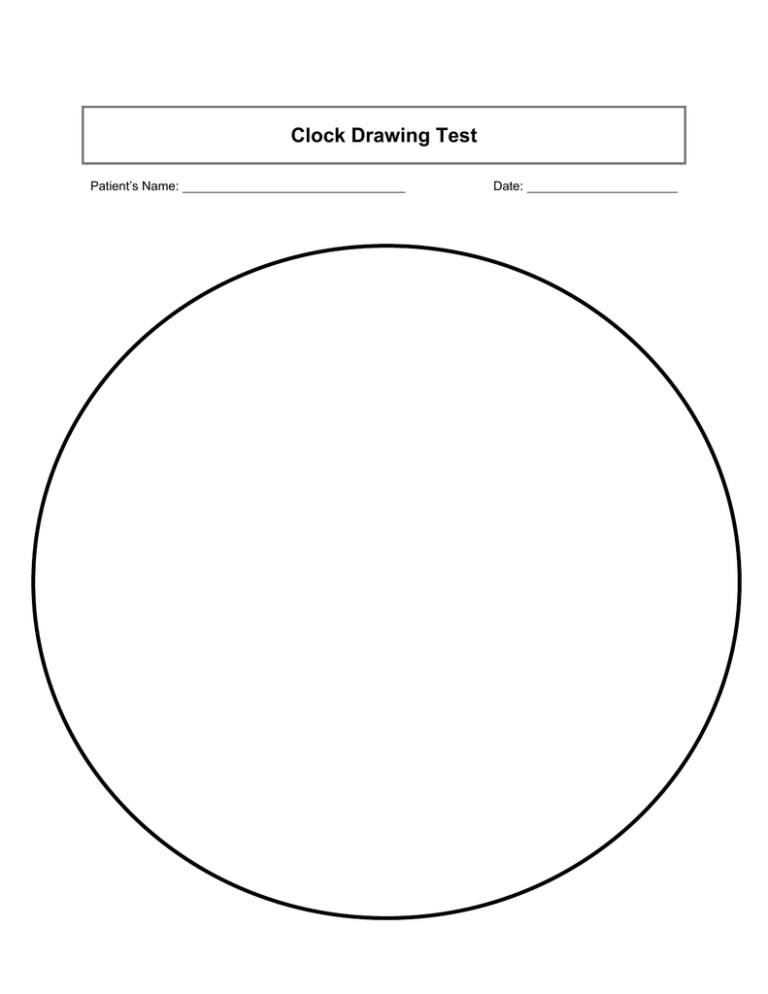Clock Drawing Test - University of Iowa Health Care
advertisement

Clock Drawing Test Patient’s Name: Date: Instructions for the Clock Drawing Test: Step 1: Give patient a sheet of paper with a large (relative to the size of handwritten numbers) predrawn circle on it. Indicate the top of the page. Instruct patient to draw numbers in the circle to make the circle look like the face of a clock and then draw the hands of the clock to read "10 after 11." Step 2: Scoring: Score the clock based on the following six-point scoring system: Score 1 2 3 4 5 6 Error(s) "Perfect" Minor visuospatial errors Inaccurate representation of 10 after 11 when visuospatial organization is perfect or shows only minor deviations Moderate visuospatial disorganization of times such that accurate denotation of 10 after 11 is impossible Severe level of disorganization as described in scoring of 4 No reasonable representation of a clock Examples No errors in the task a) Mildly impaired spacing of times b) Draws times outside circle c) Turns page while writing so that some numbers appear upside down d) Draws in lines (spokes) to orient spacing a) Minute hand points to 10 b) Writes "10 after 11" c) Unable to make any denotation of time a) Moderately poor spacing b) Omits numbers c) Perseveration: repeats circle or continues on past 12 to 13, 14, 15, etc. d) Right-left reversal: numbers drawn counterclockwise e) Dysgraphia: unable to write numbers accurately See examples for scoring of 4 a) No attempt at all b) No semblance of a clock at all c) Writes a word or name (Shulman et al., 1993) Higher scores reflect a greater number of errors and more impairment. A score of ≥3 represents a cognitive deficit, while a score of 1 or 2 is considered normal. Sources: • • • Kirby M, Denihan A, Bruce I, Coakley D, Lawlor BA. The clock drawing test in primary care: sensitivity in dementia detection and specificity against normal and depressed elderly. Int J Geriatr Psychiatry. 2001;16:935-940. Richardson HE, Glass JN. A comparison of scoring protocols on the clock drawing test in relation to ease of use, diagnostic group, and correlations with Mini-Mental State Examination. J Am Geriatr Soc. 2002;50:169-173. Shulman KI, Gold DP, Cohen CA, Zucchero CA. Clock drawing and dementia in the community: a longitudinal study. Int J Geriatr Psychiatry. 1993;8:487-496.

